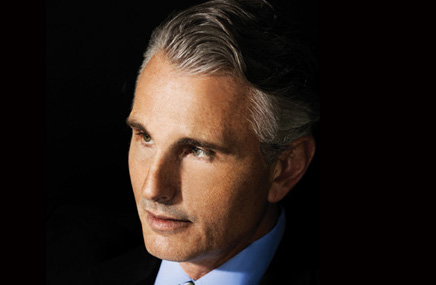Pacific Communications soared past $50 million last year. “We’re kind of huge now,” says president Ryan Abbate. “I’ve had to change my whole frame of reference—I was so used to being the start-up agency.
“We’ve had 82% compounded growth in the last five years,” Abbate says, in describing that surge. “It’s very calculated—it’s no one year spiking beyond our ability to service clients. Many agencies have failed because they’ve grown too quickly. We’re right where we want to be.”
Last year was the agency’s biggest new business year ever, and Abbate is pleased with the roster’s diversity. Of nine new accounts, perhaps the sweetest was an AOR win for Allergan’s chronic dry-eye treatment Restasis.
“It’s especially gratifying because we had pitched for it and lost [previously],” Abbate says. “It’s as big a win as we’ve had in many years.”

Allergan also gave the agency AOR assignments for its global external disease and oncology franchises. New device wins came in from Bausch + Lomb Surgical (AOR), as well as AOR status for the global launch of Thoratec Corporation’s HeartMate II. In addition, the agency was awarded corporate branding work for Thoratec and rolled out global launches for Bausch + Lomb’s enVista Intraocular Lens and Victus Femtosecond Laser Platform.
Other wins included medical communications work for MAP Pharmaceuticals’ Levadex, an adult migraine treatment. Prometheus Labs’ oncology business was re-signed when it was put up for review.
Headcount at the agency increased to 208 at the end of 2011. Joe Abiad, formerly of TBWAChiatDay and Nissan, joined Pacific as director of finance and agency operations. There are currently about 10 openings at all levels, and Abbate says, as usual, hiring is a challenge.
Groundwork was laid last year for Pacific Communications’ new branding, which debuted this year. It plays up the agency’s west coast location, which can be a hiring obstacle, and pokes a little good-natured fun at the industry.
Digital is ubiquitous to everything the agency does, and Abbate doesn’t think there will be any delineation in the near future. He feels the evolution of overall healthcare marketing model is the biggest challenge ahead.
“Back-end production, creative, account management—everything changes based on digital requirements,” he explains. “And pricing goes with that. There’s a common belief—that’s incorrect—that digital is more cost effective. It actually costs more. That requires some education with clients. One digital change can make changes up- and downstream, and it’s far more complicated than realized and it’s expensive. We do wrestle with pricing on the digital side.
“And there’s still the issue of what kind of agency you need,” Abbate adds. “You can get digital done at lower rates by guys in a garage—and there are a lot of them out there and some are doing decent work—or you can stick with your AOR, which has the institutional knowledge that might cost a bit more. This is part of the evolution. It’s not dissimilar from what we’ve had all along on the print side with boutique and large agencies.”
Though he expects a strong year—with revenue climbing into the high $50-million range—Abbate feels the industry hasn’t completely recovered.
“I think people are still cautious,” he says. “We, along with our clients, have become more efficient and will continue to be. It’s sort of the new normal.”
From the July 01, 2012 Issue of MM+M - Medical Marketing and Media








